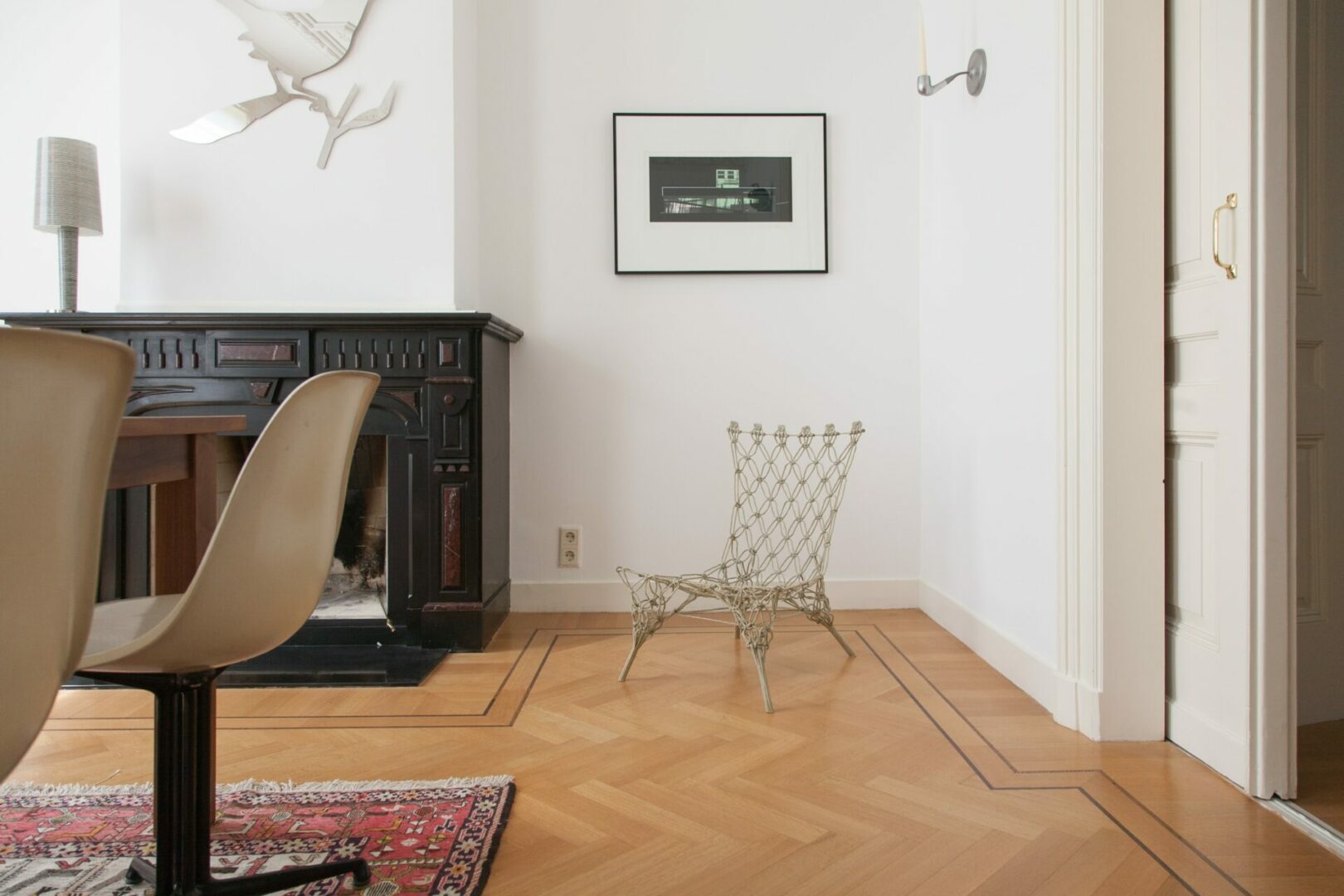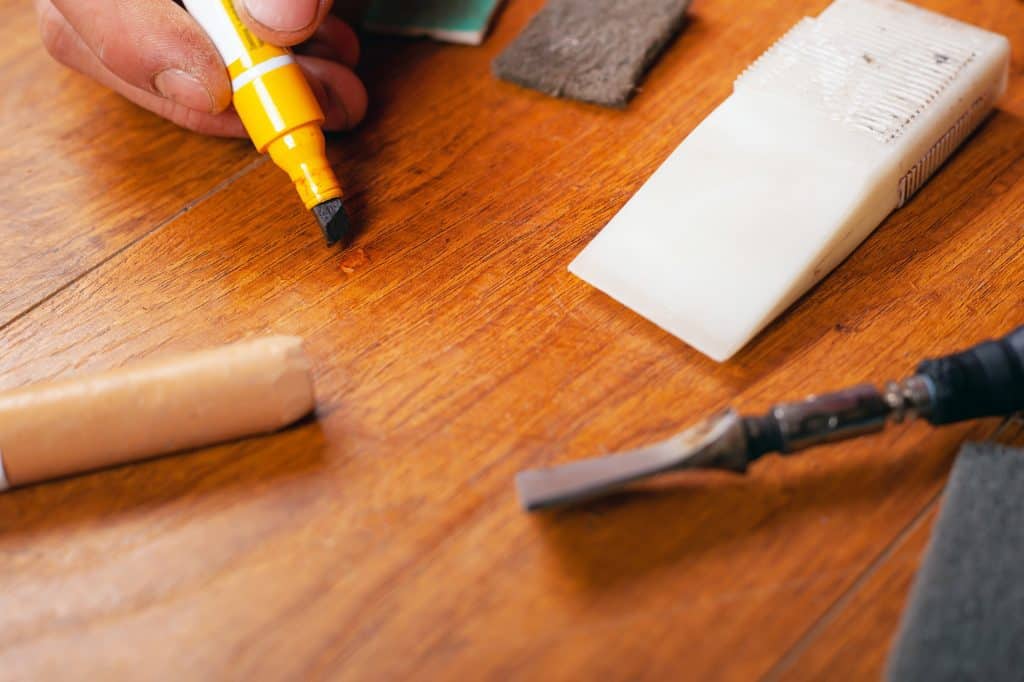Have you ever dropped a heavy object onto your laminate flooring, only to be met with a jarring scratch that seems to scream “permanent damage”? Don’t despair! While laminate flooring is known for its durability and affordability, it’s not invincible. Luckily, there are ways to tackle those unsightly scratches and restore your floor’s beauty.

Image: www.werestoresurfaces.co.uk
Laminate flooring is a popular choice for its practicality and aesthetic appeal. It mimics the look of natural wood, stone, or tile, but at a fraction of the cost, and it’s designed to withstand the wear and tear of daily life. However, even the most durable laminate can fall victim to scratches, be it from furniture dragging across the finish, sharp objects, or even pet claws. Understanding the nature of laminate flooring and the causes of scratches is crucial for knowing how to address them.
Understanding Laminate Flooring
The Layers of Laminate
Laminate flooring is composed of multiple layers, each playing a vital role in its appearance and functionality:
- Wear Layer: This is the topmost layer, responsible for protecting the flooring from scratches, stains, and scuffs. It’s typically made of a clear, tough resin that provides a high-gloss finish.
- Decorative Layer: This layer is a printed image that mimics the look of real wood, stone, or tile. It’s usually printed on a high-density fiberboard (HDF) core.
- Core Layer: The core is the heart of the laminate plank, providing structural support. It’s typically made of HDF or particleboard.
- Backing Layer: This is a moisture-resistant layer that prevents warping and swelling. It’s often made of a resin-impregnated layer.
Why Scratches Happen
The wear layer is the key to laminate flooring’s scratch resistance, but it’s not invincible. Scratches occur when the wear layer is compromised, exposing the underlying decorative layer. Here are some common culprits:
- Sharp Objects: Dropped keys, high heels, even pet claws can leave deep scratches if they puncture the wear layer.
- Dragging Furniture: Moving heavy furniture without lifting it can cause scratches as the legs rub against the surface.
- Sand & Debris: Grit and dust particles can act like sandpaper, causing scratches over time, especially if they get trapped under furniture or appliances.
- Chemicals: Harsh cleaning agents and solvents can damage the wear layer, making it more susceptible to scratches.

Image: www.interiorsplace.com
Can You Fix Scratches in Laminate Flooring?
The good news is that many scratches in laminate flooring can be repaired or at least made less noticeable. The severity of the scratch determines the repair method:
Shallow Scratches:
If the scratch is shallow and only affects the wear layer, it can often be buffed out. Try these methods:
- Soft Cloth & Polish: A soft cloth and a furniture polish designed for laminate flooring can work wonders. Use gentle, circular motions to massage the polish into the scratch, aiming to fill it in and smooth out the surface.
- Toothpaste: Believe it or not, toothpaste can be used to polish out shallow scratches. Use a non-gel, white toothpaste and apply it to the scratch with a soft cloth. Rub gently in a circular motion, then wipe off the residue with a damp cloth.
- Car Wax: For deeper scratches, apply a car wax to the affected area and buff it in with a soft cloth. Car wax can help to fill in minor imperfections and restore the shine.
Deeper Scratches:
For deeper scratches that reach the decorative layer, specialized methods are needed:
- Laminate Scratch Repair Kits: These kits often include a specially formulated filler that matches the color of your laminate flooring. The filler helps to fill in the scratch, making it less noticeable. Follow the kit’s instructions carefully for best results.
- Wood Filler: If you can’t find a laminate scratch repair kit, you can use wood filler that closely matches the color of your floor. Apply the filler to the scratch and let it dry completely before sanding it smooth.
- Touch-Up Pen: For very small scratches, a touch-up pen specifically designed for laminate flooring can be used. Choose a pen that matches the color of your floor and apply it carefully to the scratch. Let it dry completely before wiping away any excess.
When Repair Isn’t Possible:
In some cases, scratches might be too deep or extensive to repair effectively. If the scratch compromises the structural integrity of the plank or is highly noticeable, you may need to replace the damaged plank.
Preventing Future Scratches
Preventing scratches in the first place is the best course of action. Here are some tips for maintaining your laminate flooring’s pristine condition:
- Use Protective Pads: Place felt or rubber pads under furniture legs to prevent them from scratching the floor.
- Clean Regularly: Regular cleaning with a dust mop or vacuum cleaner helps prevent dust and grit from accumulating and causing scratches.
- Use Floor Mats: Place mats at entryways to trap dirt and debris, preventing them from being tracked onto the floor.
- Protect Your Pets: Trim your pet’s nails regularly and consider using pet-safe floor protectors to prevent scratches from claws.
- Use the Right Cleaning Products: Opt for laminate-safe cleaning products and avoid harsh chemicals that can damage the wear layer.
- Place Rugs Strategically: Area rugs can protect high-traffic areas and prevent scratches, especially under furniture where you might not use furniture pads.
Can You Get Scratches Out Of Laminate Flooring
https://youtube.com/watch?v=cZugaXON_-w
Conclusion
While scratches can happen, don’t be discouraged! With the right knowledge and techniques, you can often repair or at least minimize their appearance, keeping your laminate flooring looking its best. Remember, prevention is key! By protecting your floor and practicing good maintenance habits, you can prolong its lifespan and enjoy its beauty for years to come. Whether you’re a homeowner or a renter, understanding how to deal with scratches on laminate flooring gives you the power to keep your space looking fresh and inviting.





